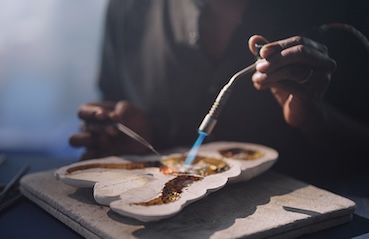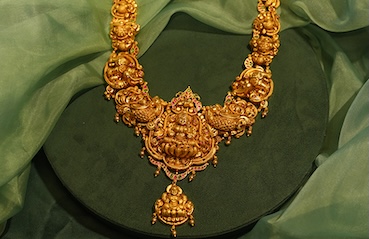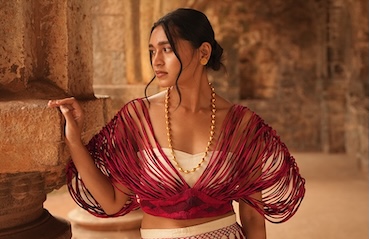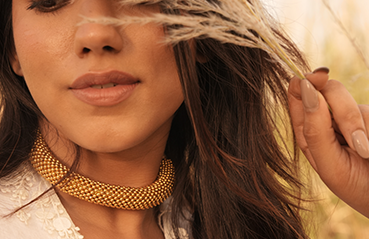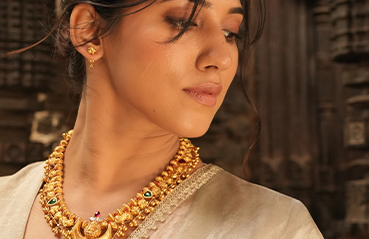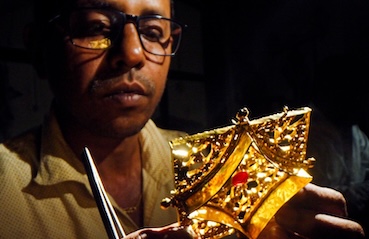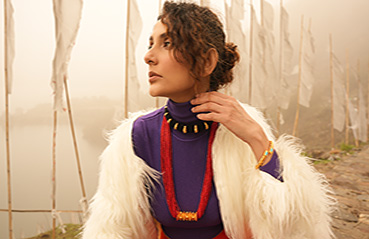Published: 01 May 2024
Timelessly Traditional Gold Jewellery That Make a Statement
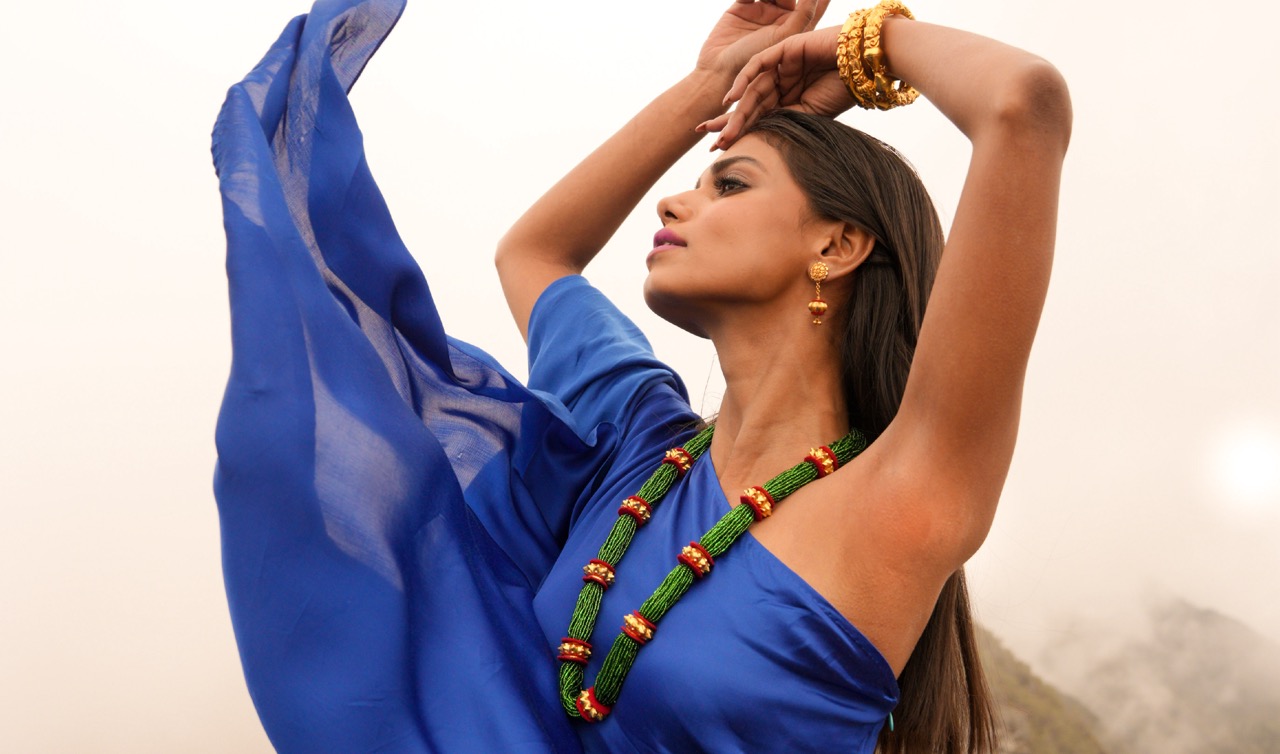
About Sikkim traditional jewellery
Sikkim, located in Northeastern India, is an exceptional state with an exquisite blend of scenic beauty and diverse cultures. It is famous not only for its breathtaking landscapes but also for its vibrant heritage. The history and traditional beliefs of the Sikkimese people are deeply intertwined with the culture and influence of neighbouring regions, including Bhutan, Tibet, and Nepal.
The state houses a population of various ethnic groups, including Bhutia, Nepalese, and Lepchas. The Sikkimese have an unwavering belief in Mother Nature's protective embrace and supernatural beliefs such as dragons, the sanctity of fire, and the 'Circle of Life', which reflects in their jewellery and other ornaments.
This article will help you understand each community's passionate views regarding faith, heritage, and beliefs and the art of shaping gold into beautiful, intricate jewellery.
Timeless traditional gold jewellery of Sikkim that makes a statement
Sikkimese jewellery holds a rich history that reflects the rich culture of this region. With deep roots in tradition, these adornments convey the essence of Sikkimese heritage. Precisely crafted, the jewellery tells stories of the region's early life and societal values. Each piece carries a unique blend of design elements, symbolising the diversity of the region. The artistry passed down through generations preserves the legacy of Sikkim's past that speaks about the identity and the intrinsic beauty of this Himalayan state.
The Bhutia community revere Buddhism through their ornaments
The Bhutia community migrated from Tibet centuries ago, and the impression of their dominant religion, Buddhism, influences their jewellery. These ornaments reflect the sacred symbols drawn on monastery walls. Some of the prominent Bhutia ornaments are:
The Yencho is a pair of gold earrings, generally flat and circular. These are made with a wax and gold casting procedure and are adorned with gemstones like turquoise and red coral, known for their healing properties.
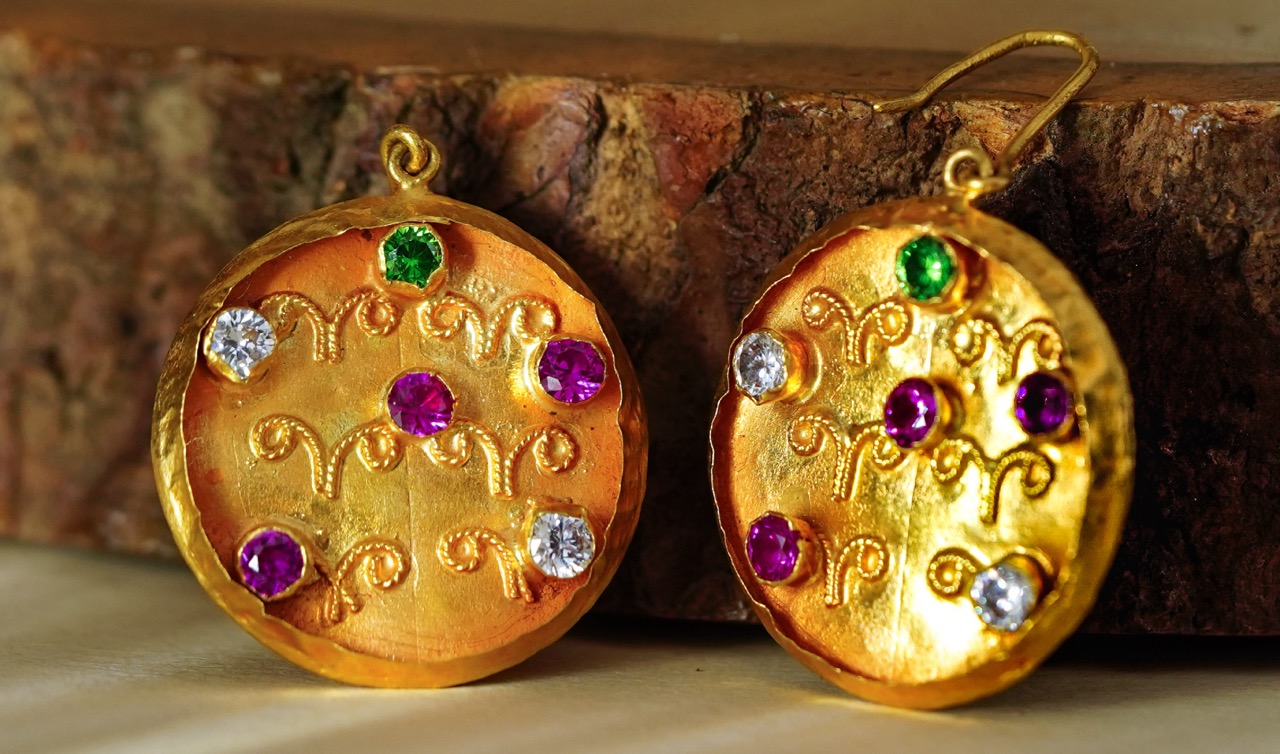 Yencho earrings are traditionally made in pure gold.
Yencho earrings are traditionally made in pure gold.
The Khao necklace is a popular traditional jewellery worn by Bhutia women.
It has a rich history that goes beyond just precious metals and gemstones. In the past, it was an amulet box that contained a special amulet given to tribal warriors who travelled the region by the monks or their clan to protect them during wartime. The box was designed to keep the amulet safe from damage. Later, a monarch wished for a more modern and simpler design with an abstract motif like the ‘Mandala’ to represent their religious beliefs.
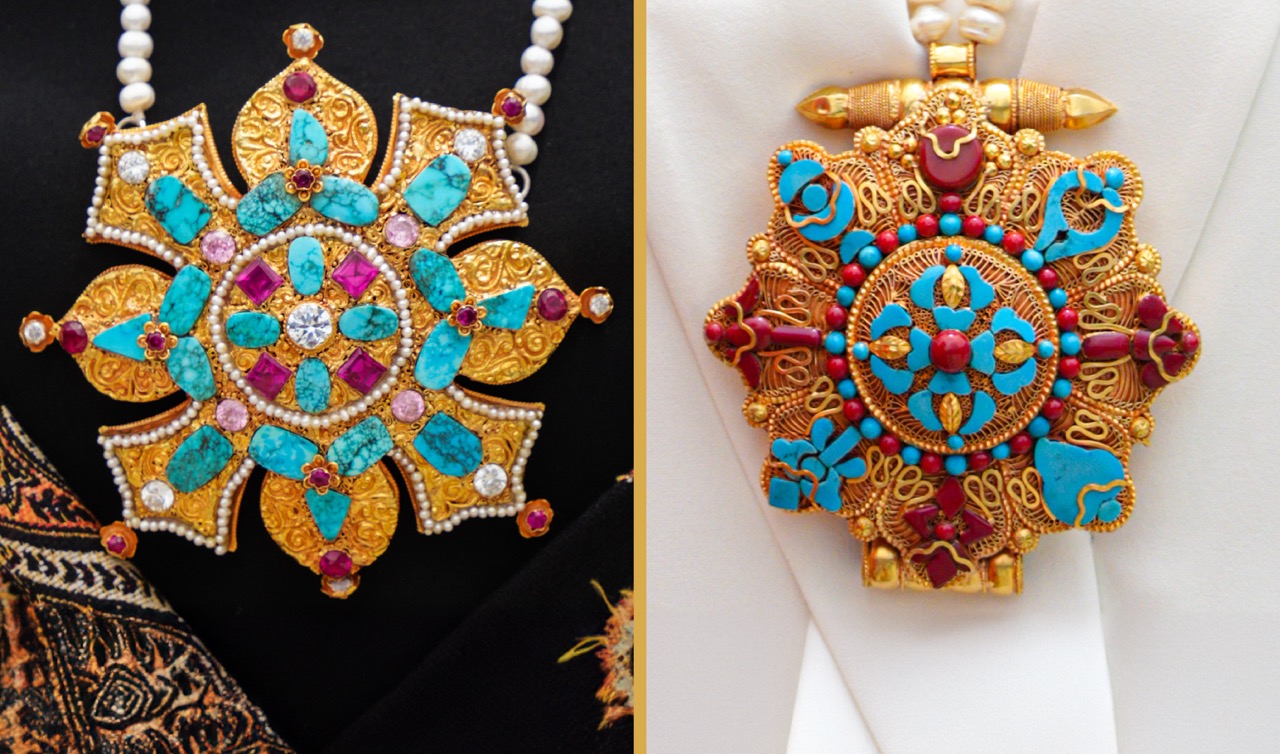 Khaos are the perfect representation of ‘where symbolism meets symmetry’.
Khaos are the perfect representation of ‘where symbolism meets symmetry’.
Initially, the Khao used to be heavy, weighing almost 250 grams or more. However, the design was later modified, making it a unique cultural fashion statement. Each Khao takes three weeks to carve and is either circular or rectangular, always symmetrical, with eight sides representing Ashtamangla, which signifies the eight auspicious signs in Buddhism.
Different Khaos were worn for different purposes like fertility, protection in war, and prosperity. It has two kinds - one entirely made of gold and precious gems like turquoise and the other with beads and stones.
Other popular Bhutia jewellery is the Phiru, a pearl necklace that has a heavy influence of turquoise and Dzi beads; Diu, which is a traditional and timeless bracelet adorned by a married woman of Sikkim, and the Joko, a ring with a red coral centre that can be worn both by men and women.
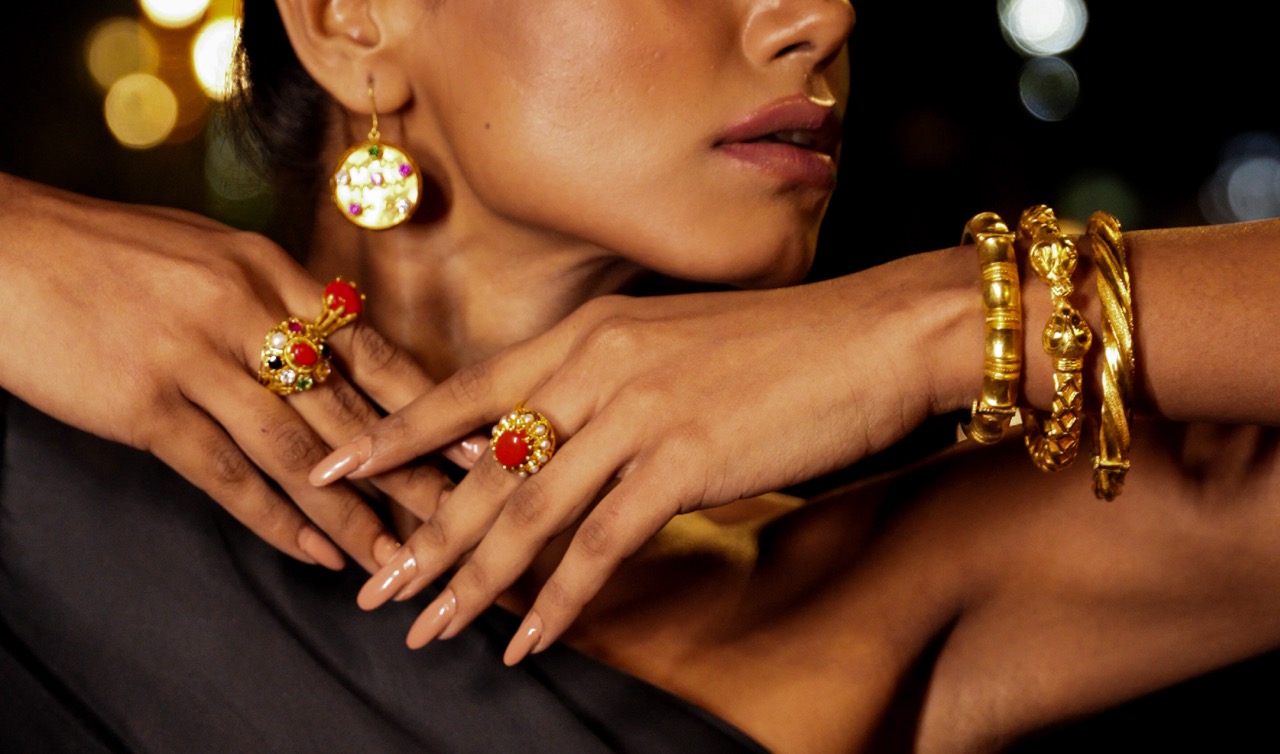 Heavy gold bangle ‘Diu’ and Joko ring worn by Sikkimese women.
Heavy gold bangle ‘Diu’ and Joko ring worn by Sikkimese women.
All these ornaments are designed intricately with motifs like dragons and lotuses and enriched by various precious gems and colourful stones. The Bhutia people strongly believe in the purity of gold and the healing properties of turquoise and red coral.
Nepalese and their spiritual beliefs are reflected through their ornaments
Nepalese jewellery is a captivating reflection of Sikkim’s rich cultural and spiritual heritage. It fuses Hindu and Buddhist influences and presents a unique charm. They generally have lotus or Om motifs that represent profound spiritual significance.
The Kantha is a neckpiece of gold strung by red thread work and is believed to carry ancestral blessings. As the monarchy in Sikkim ended, there was a rise in the middle class, changing the socio-economic pattern of the state. Artisans began designing more miniature versions of the Kantha choker to make it accessible to ordinary people, and Nepalese got a chance to wear it as a fashion statement.
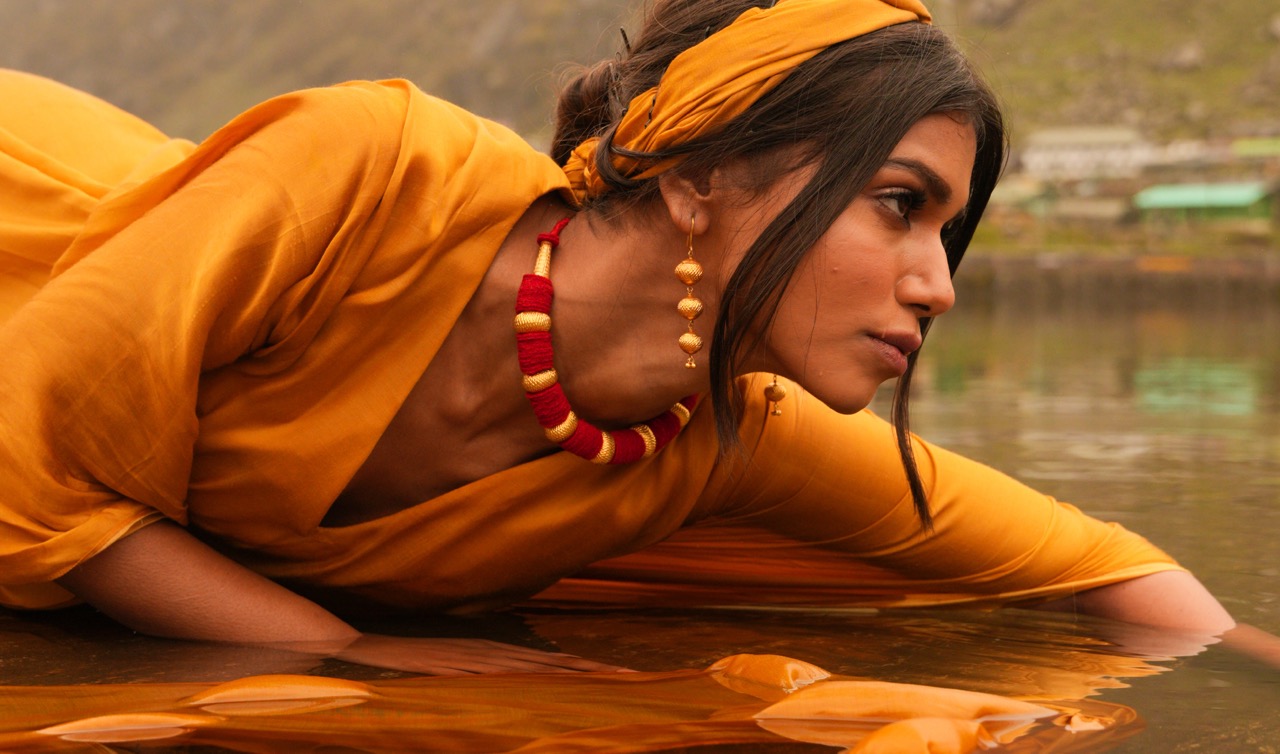 Kantha is used as a fashion statement usually made in Black or Red thread.
Kantha is used as a fashion statement usually made in Black or Red thread.
Naugedi (Nau means nine, a number that is a potent symbol of cultural identity) is a traditional necklace made of nine braided gold threads. It looks like the Rudraksha seed capturing Hindu sentiments and is worn by women yearning for a husband with virtues and qualities like Lord Shiva.
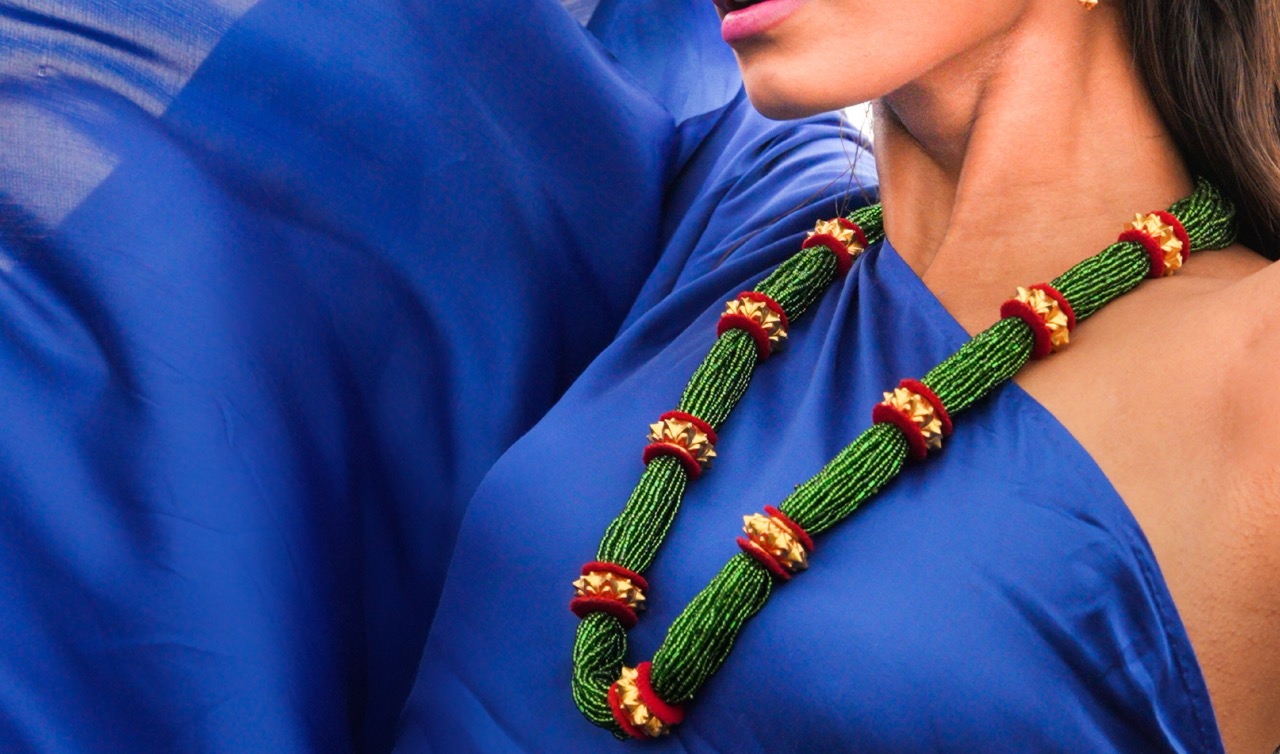 The Naugedi is adorned with nine gold pieces inspired by dragons and fire.
The Naugedi is adorned with nine gold pieces inspired by dragons and fire.
Tilhari is a long, hanging necklace, typically adorned with either red or green beads. On one's wedding day, the beads are usually green; red beads are preferred after marriage. Some of these necklaces are so long that they can even be worn as a sash across the body.
The pendant on a Tilhari typically has seven grooves, symbolising the seven days of the week and representing the continuity of life. The ornament is spindle-shaped, which denotes rotation and represents the cyclical form of each person's life. Additionally, the pendant stands for fertility, virility, and passion. The slightly ribbed sections in between the grooves are a depiction of holy Rudraksha seeds.
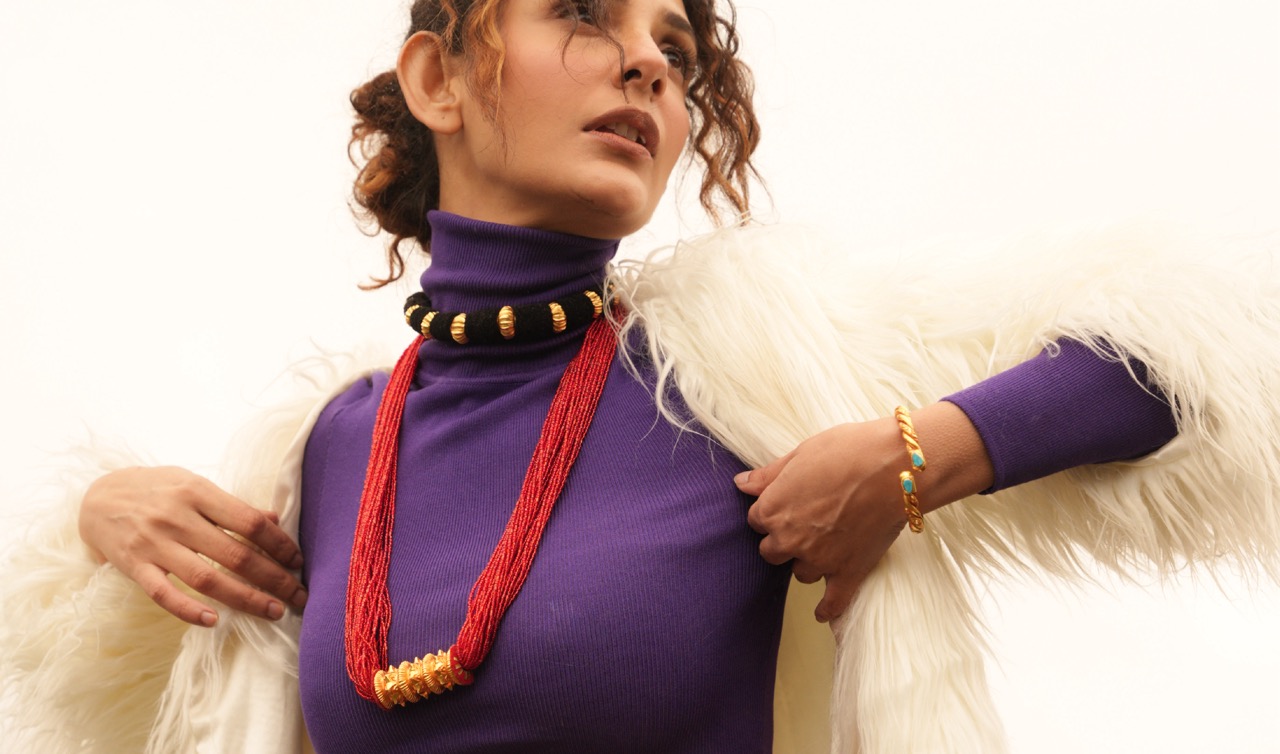 The Tilhari symbolising fertility, virility, and passion.
The Tilhari symbolising fertility, virility, and passion.
Some other well-known Nepalese jewellery are Sir-Bandi (a headgear made up of gold with a dangling pendant at the forehead), Tikmala (heavy neckpiece), Bulaki (earring), and Dungri (nose-pin). These ornaments are worn by married women daily and for major cultural events and festivities.
Other communities in Sikkim and their traditional jewellery
The Lepchas, Limbu, and Tamang are three other prominent tribal communities in Sikkim, each with unique jewellery traditions. Lepchas have distinctive pieces like the Lyak, Namchok, Gyar, Nessey, and Laskari. Limbus’s jewellery is famous for its Samyangfung headgear, and the Tamang tribe wears Ghau pendants and Akor earrings shaped like lotus buds.
How do artisans bring life into Sikkim traditional jewellery?
Artisans bring life into Sikkim traditional jewellery through meticulous handcrafting and intricate designs usually inspired by nature and local culture.
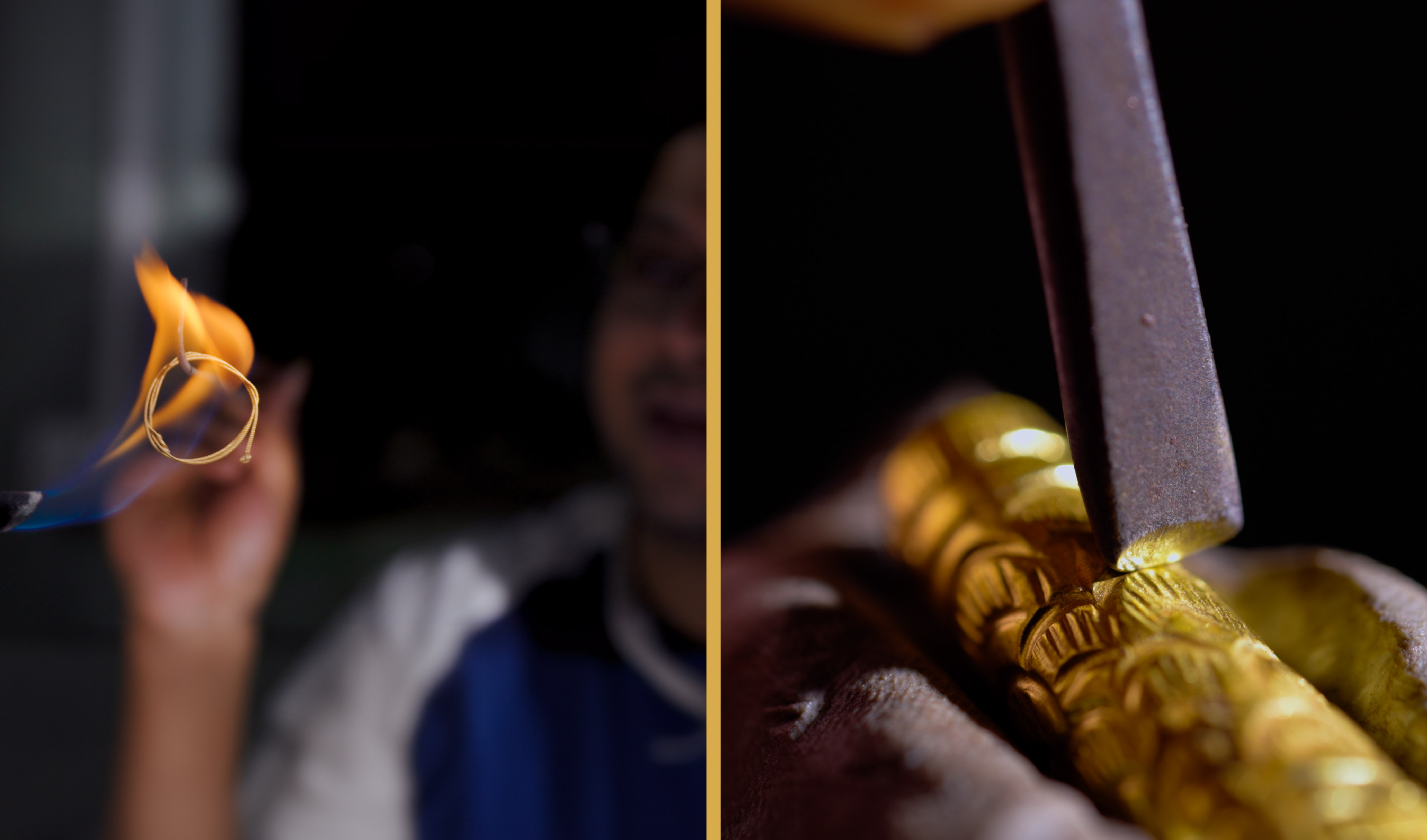
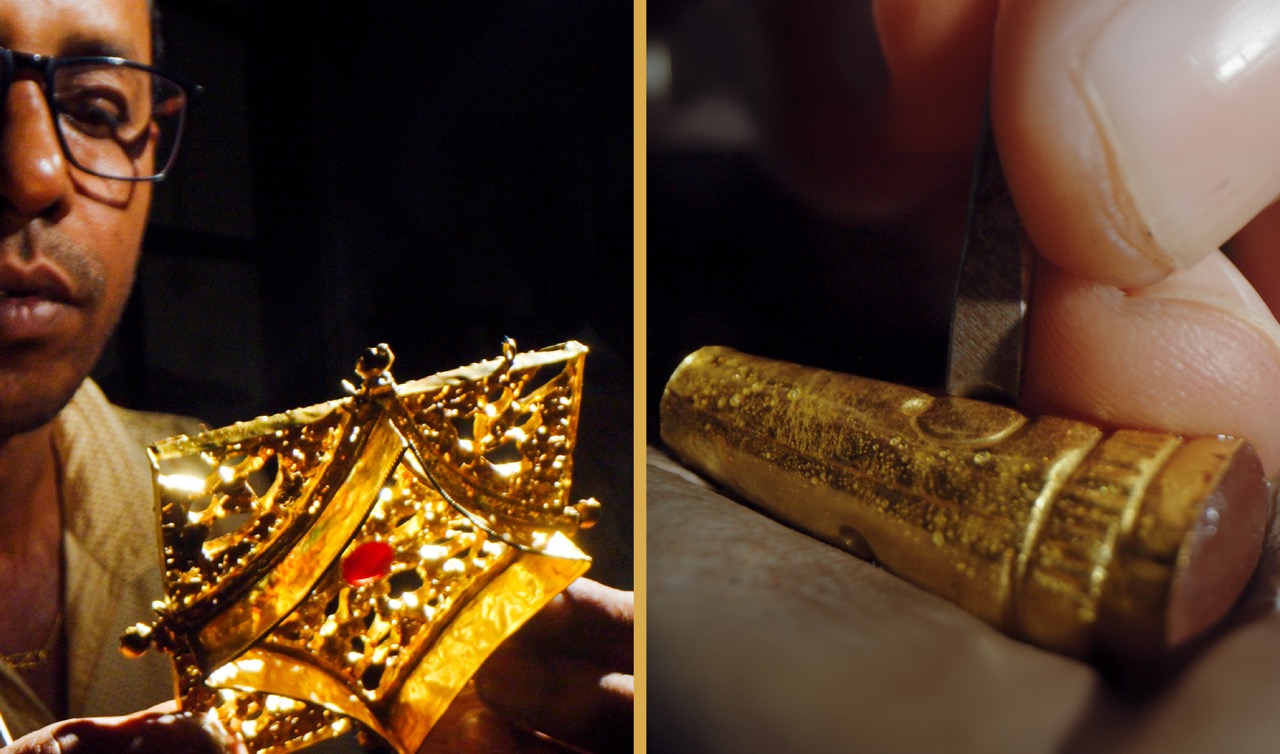
The process begins with a prototype mould to give the ornament its desired shape. Artisans use various methods like carving out detailed motifs on the malleable gold with a hammer and iron nail or using a prong and bezel setting to place a gemstone securely. These techniques represent the pinnacle of craftsmanship and tradition.
These ornaments are not just accessories; they reflect the history and culture of each community and how the jewellery has transformed over the last half-century.
What sets the traditional jewellery of Sikkim apart?
What makes Sikkimese jewellery a genuinely remarkable and timeless statement is the fusion of traditions from various tribal communities. These communities have co-existed and shared culture and heritage over centuries, creating an influence that is a harmonious blend of symbolism and beauty. An artistic example, Sikkimese jewellery is a testament to cultural exchanges, creating a timeless art form that can also be a modern statement of beauty and expert craftsmanship.
